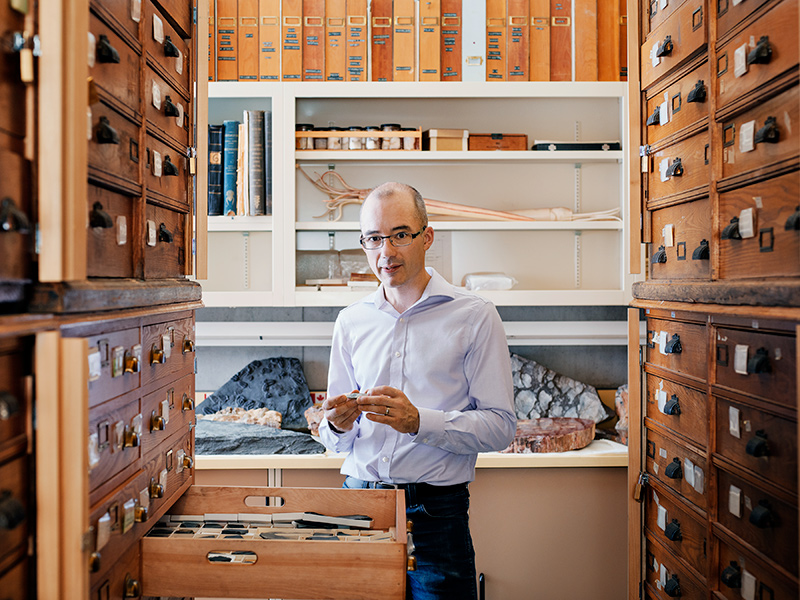Today, the portion of the Canadian Rockies that stretches through southeastern British Columbia is known for some of the country’s most spectacular mountain scenery, drawing hikers, skiers and wilderness lovers from around the world. But when Jean-Bernard Caron visits the area, his attention is focused on the rocks beneath his feet – rocks that bear witness to an era hundreds of millions of years before the ski lifts opened for business.
Caron, a U of T professor of ecology and evolutionary biology, is an expert on the Burgess Shale – an outcropping of sedimentary rock in Yoho National Park in B.C. that contains the preserved remains of a remarkable array of animals. These fossils provide a tantalizing glimpse into what life on our planet was like in the latter part of the Cambrian period, about half a billion years ago. While hardly anything larger than a single cell existed for Earth’s first three billion years, the Cambrian saw the rise of a staggering variety of complex creatures – animals with legs and gills and compound eyes. Paleontologists call this evolutionary burst the “Cambrian explosion.” In spite of the name, the “explosion” actually lasted millions of years, Caron explains, from about 540 million to 505 million years ago – though that’s still pretty quick in terms of the history of life on Earth. “It’s a unique event,” says Caron, who is also senior curator of invertebrate paleontology at the Royal Ontario Museum. “You have the evolution of all of the major groups of animals in a short period of time.”
In other words, the Burgess Shale fossils illuminate a crucial chapter in the history of life. That chapter unfolded in the water: back then, what is now the side of a mountain would have been 100 metres below sea level. Not much was happening on land or in the air. The continents were barren, and it would be another hundred million years before the first insects buzzed in the sky. It was also milder than it is today. And so nature’s great experiment with larger and more complicated body types occurred in the warm Cambrian seas, especially on the ocean floor.
The cause of the Cambrian explosion has proven difficult to pin down. “It remains one of the biggest unresolved scientific controversies – in paleontology, at least,” says Caron. One recent theory is that chemical changes in Earth’s oceans allowed animals to make use of minerals such as calcium phosphate, calcium carbonate and silicon dioxide for the first time, leading to the development of the first bones, shells and teeth.
Another idea is that a kind of evolutionary “arms race” occurred between predators and prey, as organisms for the first time needed to find others to feed on (and to avoid being eaten themselves), developing more complex bodies in the process. However, Caron says this may have been a result of the explosion rather than a cause. A relatively sudden increase in oxygen levels in the atmosphere and oceans could have also played a role – but this could have already been happening tens of millions of years earlier. Ultimately, says Caron, multiple factors may have been at play.
Our best clues for solving this mystery may be the fossils themselves. And as vast as the ROM’s collection is, Caron is certain there’s much more to be found. “We’re only scratching the surface,” he says.
Recent Posts
For Greener Buildings, We Need to Rethink How We Construct Them
To meet its pledge to be carbon neutral by 2050, Canada needs to cut emissions from the construction industry. Architecture prof Kelly Doran has ideas
U of T’s 197th Birthday Quiz
Test your knowledge of all things U of T in honour of the university’s 197th anniversary on March 15!
Are Cold Plunges Good for You?
Research suggests they are, in three ways





